Ecommerce Automation by Use Case
Explore automated solutions targeting every critical catalog task
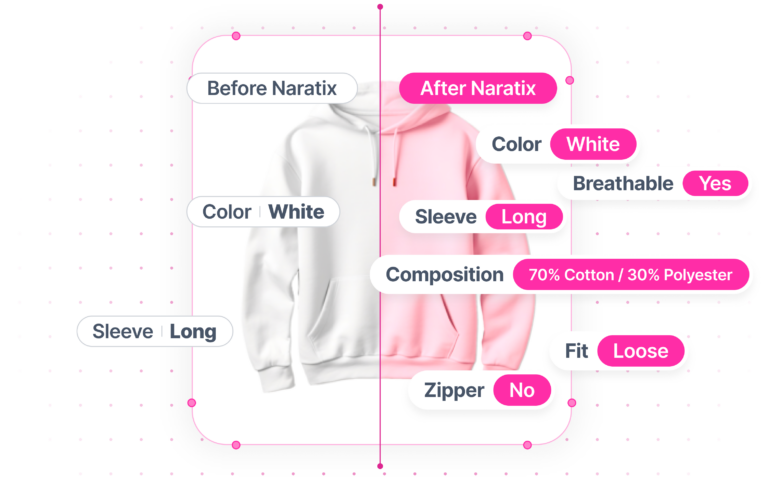
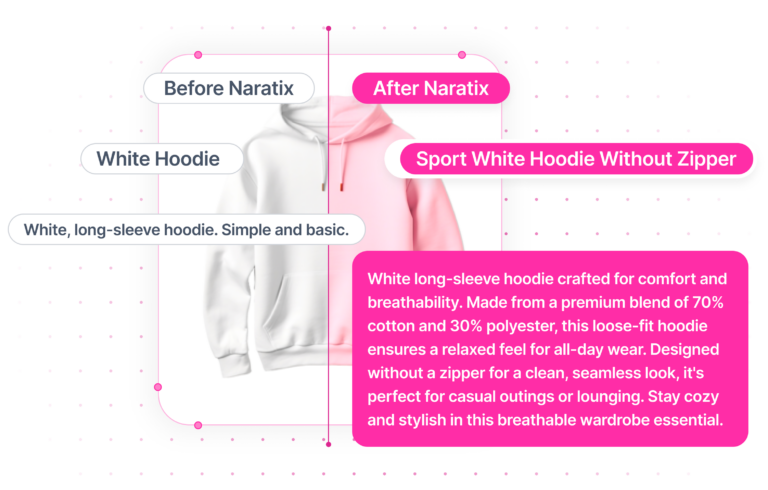
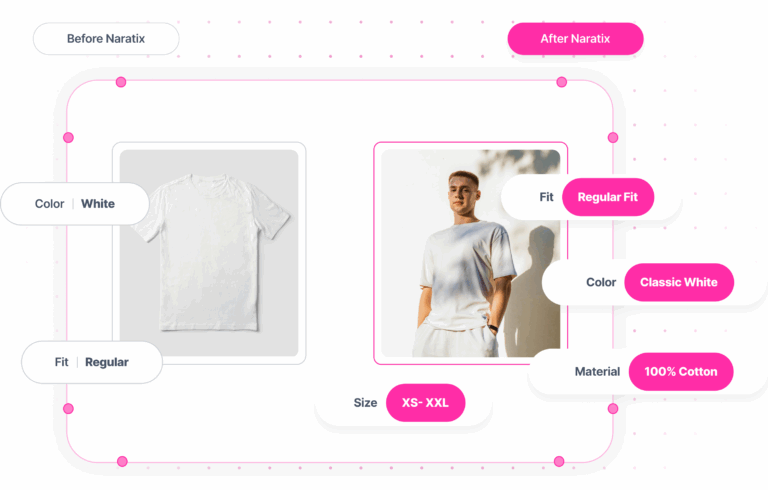
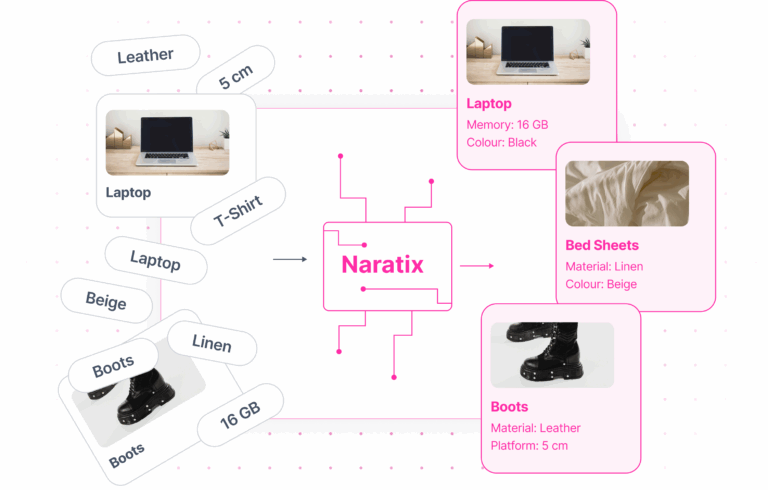
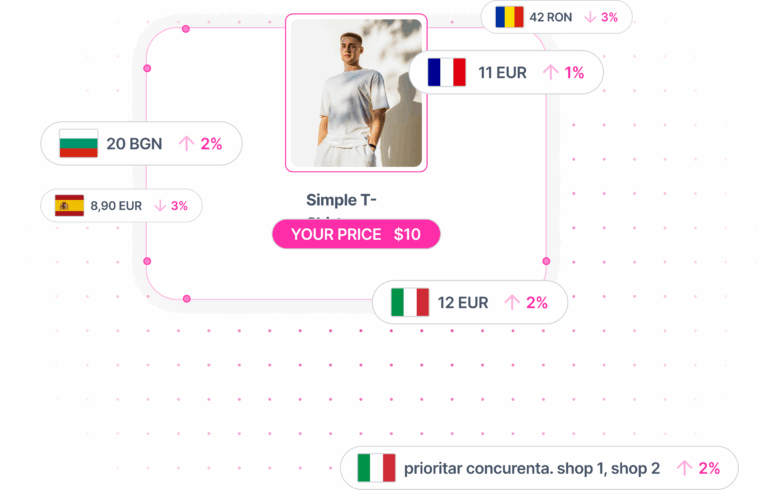
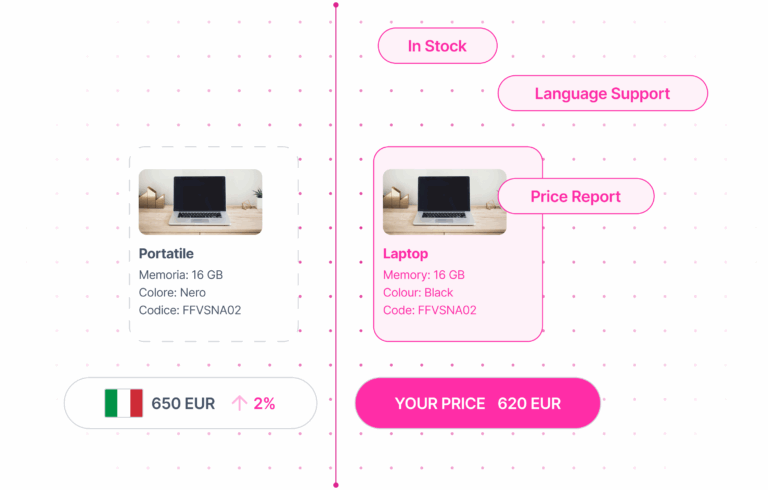
Choose the ecommerce automation that solves today’s biggest catalog challenge
Each module speeds launches, lifts conversion, and plays nicely with your current stack, choose one or mix and match
Clean, merge, and future‑proof categories so filters work and Google understands every page instantly.
Fill every missing size, color, spec, and dimension for stronger search visibility and approvals.
Generate persuasive, keyword‑rich copy that matches brand tone and boosts add‑to‑cart rates.
Produce studio‑quality, compliance‑ready galleries from any image source without booking photographers.
Drop each SKU into the perfect shelf so shoppers and bots find it in one click.
Track market prices in real time and adjust offers before competitors steal the sale.
See where products appear, how they’re priced, and what gaps hurt market share.
Localise specs, language, and tax fields automatically so listings launch worldwide in hours.
Harmonise supplier feeds to meet every brand guideline without endless spreadsheet corrections.
Why choose modular ecommerce automation solutions over one giant platform?
Solutions by Use Case let you tackle the bottleneck costing the most revenue right now, then add more modules as you grow. That means lower upfront spend, faster wins, and no risky “rip‑and‑replace” project stalling sales or draining IT resources.
What are the benefits of ecommerce automation by use case
Targeted tools deliver punchy ROI, here’s what merchants love most
Faster Time‑To‑Live
Launch fresh inventory days sooner, capitalising on trends before competitors react.
Lower Data Spend
Cut freelance cleanup and copy costs; budget shifts to acquisition campaigns.
Fewer Compliance Flags
Pre‑flight checks prevent costly takedowns and keep seller ratings high.
Cross‑Stack Harmony
Clean outputs feed PIM, ERP, ads, and analytics without manual tweaks.
Scalable Capacity
Handle seasonal surges effortlessly, pay only for processing you use.
Clear ROI Tracking
Dashboards turn saved hours and higher conversion into concrete profit metrics.
Ecommerce Automation by Use Case
Which ecommerce automation solutions should I choose if I’m drowning in messy product data?
Start with the pain point that’s stealing the most revenue today. If shoppers can’t filter or Google can’t index your pages, a taxonomy audit cleans categories first. If listings are invisible because specs are missing, product‑attribute enrichment fills size, color, and material fields. All modules connect later, so you solve the biggest leak fast and layer on other automations whenever you’re ready, without a risky “big‑bang” project.
How will these automations help my store rank higher on Google and marketplace search?
Search algorithms read structured data, categories, attributes, and keyword‑rich copy to decide which products appear first. By automating taxonomy, enrichment, and content creation, every SKU receives complete, standardised details and unique, SEO‑friendly descriptions. That drives more long‑tail queries like “women’s waterproof hiking boots size 7” to your pages, lifting organic clicks while reducing ad spend because customers land on you naturally.
We’re a small team, will we really save time, or just shift work elsewhere?
Automation replaces repetitive spreadsheet chores with background processing. Tasks like merging duplicate categories, populating missing dimensions, or resizing photos happen overnight, returning a ready‑to‑upload file. Clients typically reclaim 80 percent of catalogue prep hours, letting lean teams focus on marketing campaigns, customer service, and growth instead of manual data fixes.
Do I need special software or technical skills to integrate these solutions?
No coding required. You export a standard CSV, Excel sheet, or API feed, the platform does the heavy lifting. Cleaned data flows back in the same format your PIM, ERP, Shopify, Magento, or BigCommerce store already accepts, so you stay inside familiar tools. Most merchants integrate and publish their first batch within a week.
How secure is my product and pricing data during processing?
Feeds move over encrypted TLS 1.3 connections and rest in ISO‑certified, region‑specific data centres. Role‑based access controls ensure only your team and a limited set of processing services see the data. No competitor ever touches your catalogue, and full audit logs show who changed what and when, critical for GDPR, CCPA, and internal compliance reviews.
What kind of ROI can I expect after rolling out catalogue automation?
Across hundreds of stores, median results include an 8‑12 percent lift in organic traffic, a 10‑15 percent boost in conversion from richer product pages, and a 30‑40 percent drop in “item not as described” returns thanks to clearer specs and better photos. Add saved labour hours and lower ad spend, and most retailers recoup their subscription within one quarter, then see pure profit thereafter.